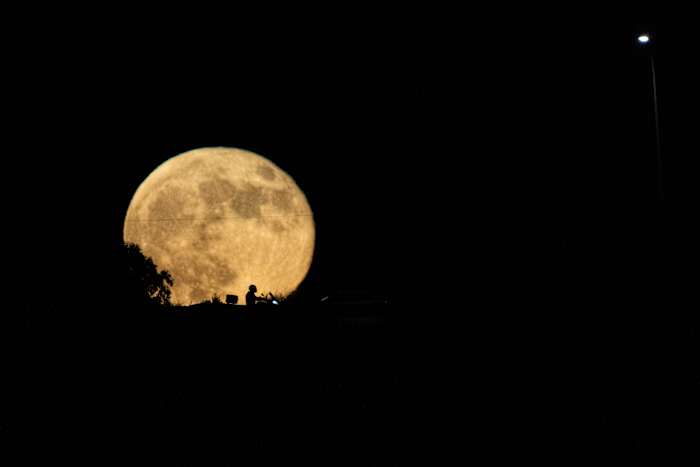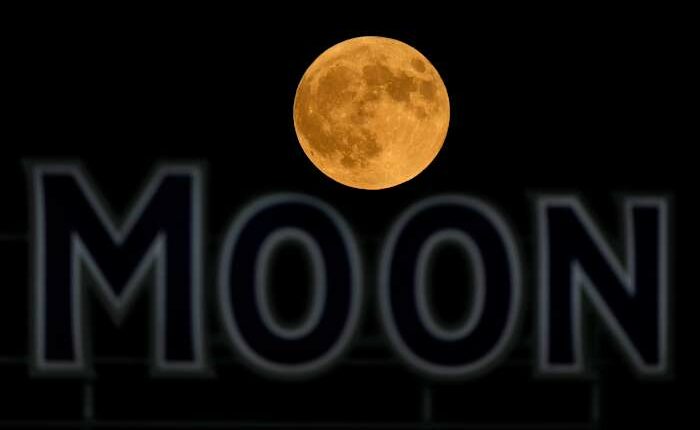Share this @internewscast.com

NEW YORK – The moon will appear slightly larger and brighter Monday night during what’s known as a supermoon.
October introduces the first of this year’s trio of supermoons. These occur when a full moon is positioned closer to Earth within its orbit, making it appear up to 14% larger and 30% brighter than the dimmest moon of the year, as stated by NASA. This slight difference is noticeable a few times annually, occasionally aligning with events like lunar eclipses.
“It’s not really very unusual,” said Derrick Pitts, chief astronomer with the Franklin Institute in Philadelphia.
Anyone on the planet can enjoy a supermoon without needing special tools if the sky is clear. However, the difference can be subtle, particularly if viewers haven’t been observing the regular moon in the preceding nights.
“Observing the moon high in the sky offers no reference point to perceive its size,” noted Pitts.
During the latest viewing opportunity, the moon will come within approximately 224,600 miles (361,459 kilometers) of Earth. The year’s closest supermoon is expected in November, with another following in December.
Looking ahead to 2026, two lunar eclipses are anticipated: a total eclipse across most of North America, Asia, and Australia in March, and a partial one in August spanning the Americas, Africa, and Europe.
___
The Associated Press Health and Science Department receives funding from the Howard Hughes Medical Institute’s Department of Science Education and the Robert Wood Johnson Foundation, though the AP maintains full editorial responsibility over all content.
Copyright 2025 The Associated Press. All rights reserved. This material may not be published, broadcast, rewritten or redistributed without permission.













